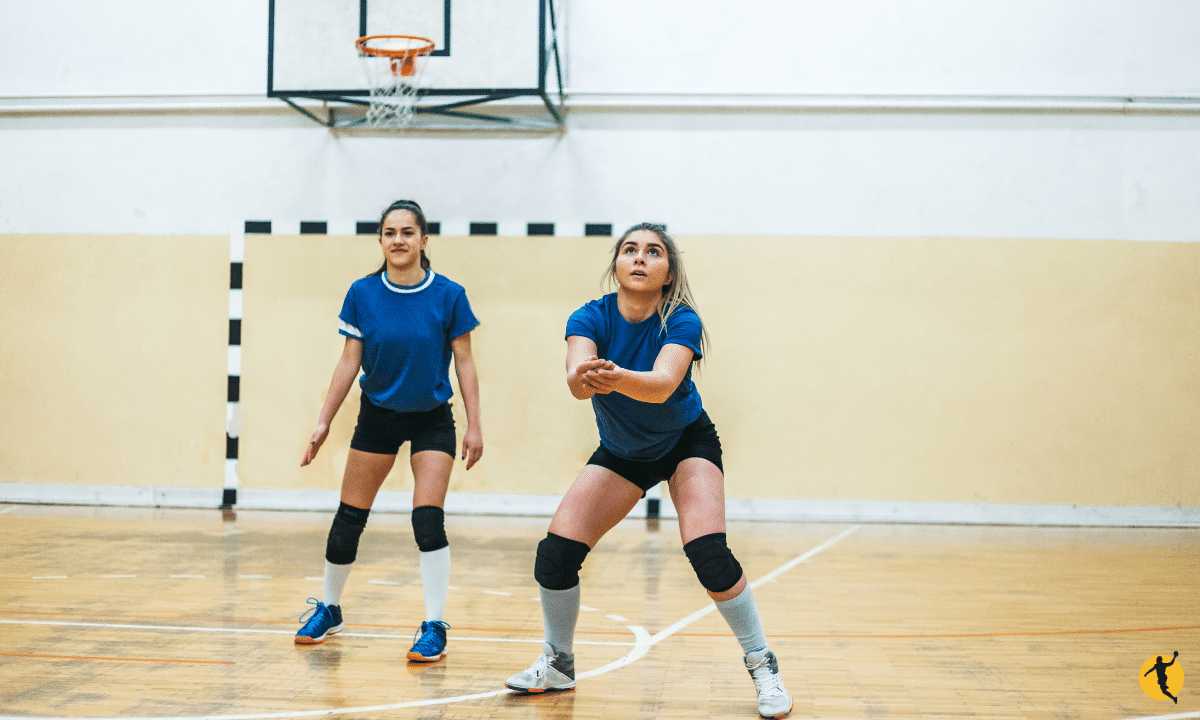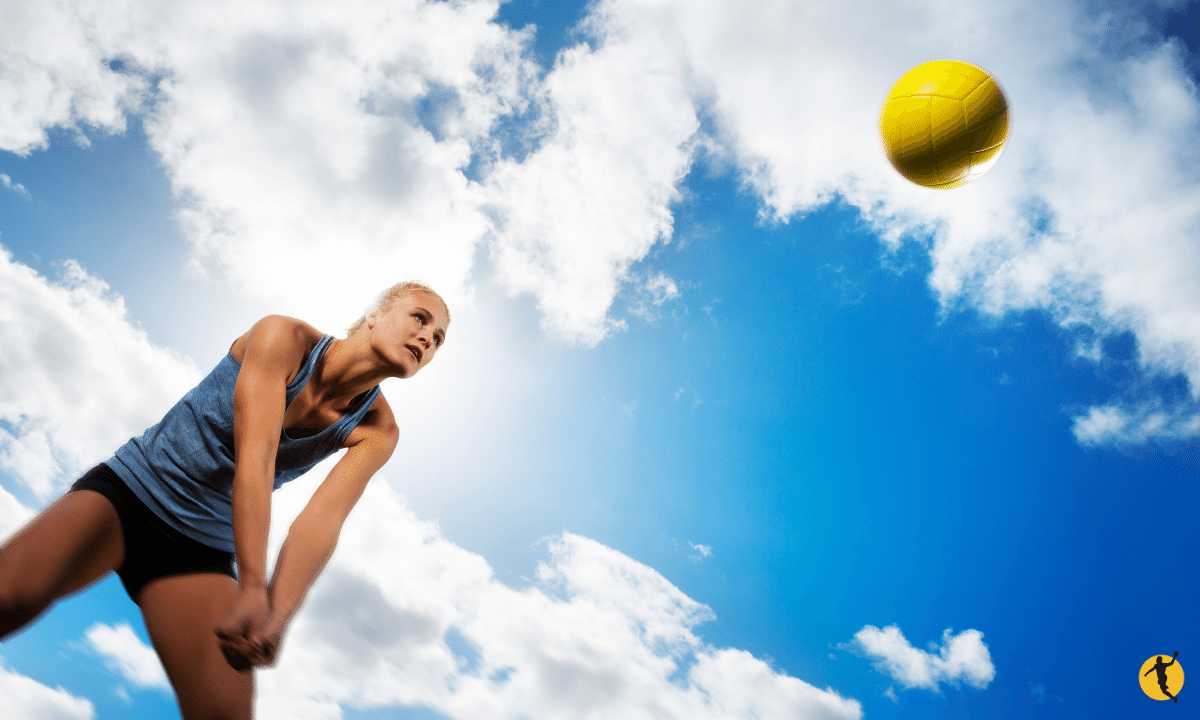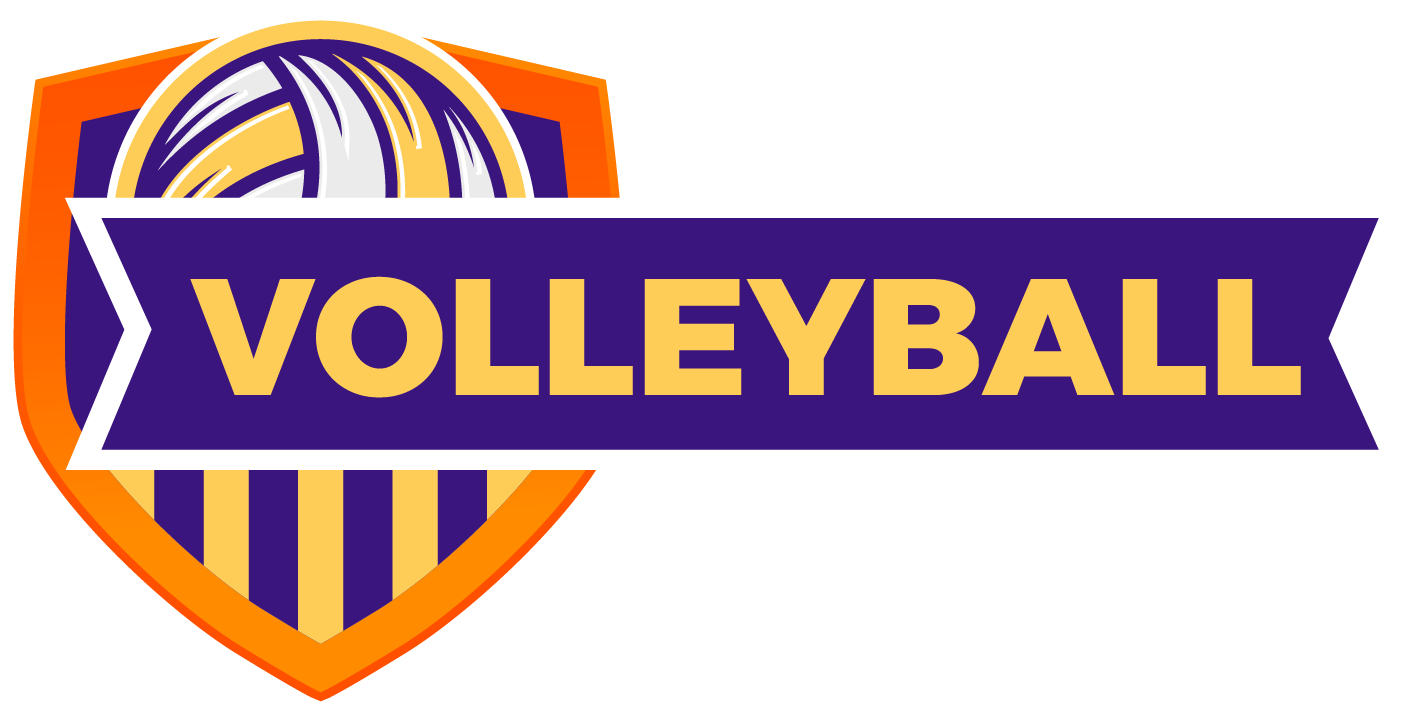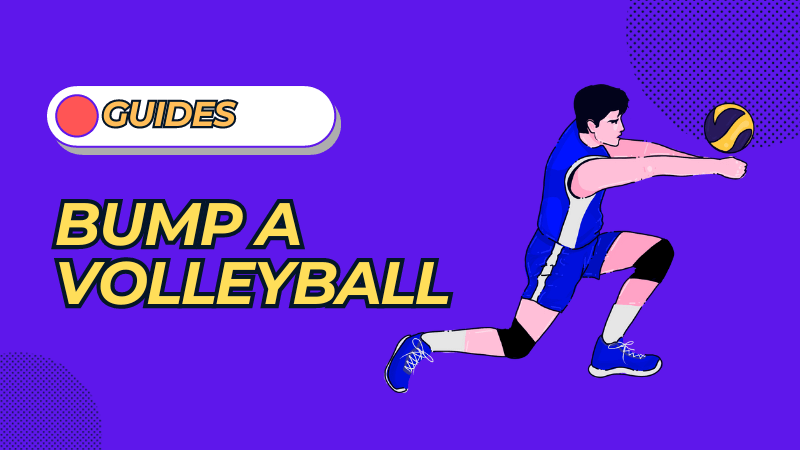The bump, known as passing in volleyball, is an essential skill every player must master. Whether receiving a serve or a hard-driven hit, the bump is your initial contact with the ball, setting the stage for a successful play. But mastering this technique can be challenging. Positioning, wrist alignment, forearm control – all must come together flawlessly.
Did you know that the current standard rules of volleyball were established in 1895 by William G. Morgan, who was looking for a less physically demanding alternative to basketball? Techniques like bumping were yet to be refined, and players were even allowed to throw the ball over the net! Thankfully, the sport has evolved, and so have the techniques.
In this guide, we’ll walk you through the step-by-step process to bump a volleyball, addressing common pain points and offering tips to elevate your game. Whether you’re a beginner or looking to sharpen your skills, you’ll find valuable insights here.
What Is a Bump in Volleyball?
A bump in volleyball, also known as a pass, is a fundamental and vital skill for playing the game. It’s performed using the forearms and is typically the first contact with the ball, often used to receive a serve or a hard-driven hit.
The bump is an essential maneuver that requires precise coordination, positioning, and technique. It allows a player to control the ball’s direction and speed, setting up opportunities for their team to attack or defend.
To execute a bump, the player must align their body correctly, create a platform with their forearms, and hit the ball with equal force on both arms. The key to a successful bump is physical skill, timing, judgment, and understanding of the game’s flow.
This seemingly simple skill sets the stage for all subsequent plays in a match. The bump is often considered the foundation of volleyball, and mastering it is crucial for anyone who wants to play the game at any level. Whether it’s a casual game on the beach or a high-stakes professional match, the bump is a skill that every volleyball player needs to know, learn, and continuously practice.
How to Bump a Volleyball?

Bumping a volleyball is often perceived as simple but involves precision, technique, and proper timing. Several aspects need to be mastered from getting into the right position to making contact with the ball. In this section, we’ll delve into the various components that make up the bumping process, detailing each step for a comprehensive understanding of this fundamental skill.
Getting to the Spot
Getting into the proper spot to bump the ball is the foundation of a successful pass. Your legs should be about shoulder-width apart, leaning forward slightly, ready to spring into action. Keep your hands half a foot apart and bring them together as the ball approaches. This positioning allows you to be agile and quick, which is essential for handling unpredictable balls and adjusting to their direction.
Also, Read: How Many Players Are on a Volleyball Court?
Put Yourself in the Right Position
Once you are in the correct spot, putting yourself in the right position is crucial. You’ll need to create a “platform” with your arms, the area between your wrists and elbows that is the sweet spot for hitting the ball. Clasp your hands with your thumbs side-by-side, and hold your arms straight in front of you, slightly below the waist. This position enables control, steering the ball with accuracy and precision.
Establish Your Platform
Establishing your platform involves your forearms and the correct hand position. Two common methods are the “ball method” and the “cup method.” Make a fist with one hand and wrap the other around it or bend one thumb down to its palm, resting it on the other hand. Keep your elbows locked and knees bent. Your thumbs should be parallel, and the fingers on each hand-aligned. This part of the process gives you a solid base to contact the ball accurately.
Get Ready for Contact
Preparation for contact with the ball is vital, especially for younger players. Using your knees and arms, you need to push through the ball, generating the necessary force to direct it. Bending your knees and utilizing them to power your legs can provide the momentum needed to guide the ball. It’s not merely about making contact but controlling where that contact leads the ball.
Hit the Ball
Hitting the ball effectively requires you to position yourself so that both arms make contact equally. This symmetry ensures that you can aim and direct the ball properly. It can be tricky when the ball is coming at an unexpected angle, but positioning your arms so that the ball hits with equal force will enable you to aim and hit it correctly. This is the final touch in the bumping process that sets the stage for the next player or play in the game.
Note: Mastering the art of bumping a volleyball is about understanding and perfecting each step. When practiced and applied, these specific techniques can make you a great bump passer, enhancing your overall game.
Also, Read: What Is a Kill in Volleyball: An In-Depth Definition
Bumping the Ball: Tips and Tricks from Volleyball Experts

Bumping a volleyball is not just about hitting it; it’s an art that requires specific techniques and approaches. Whether you’re new to volleyball or want to fine-tune your skills, these tips and tricks can elevate your bumping game. Let’s explore these critical aspects to ensure your first touch with the ball is accurate, controlled, and impactful.
Create a Platform With Your Forearms
Your forearms are the main tools in the bumping process. Creating a platform with them is an essential step. Keep your hands together, making a fist with one hand and wrapping the other around it. This configuration creates a consistent, flat surface, allowing you to better control the ball’s direction. Regular practice with this technique will lead to more stable and accurate bump passes.
Take Aim With Your Shoulders
The direction in which you aim the ball depends greatly on your shoulders. Your shoulders should align with your target, ensuring that your platform’s angle directs the ball where you want it to go. If you want to aim left, your left shoulder should lead, and vice versa. Using your shoulders to guide the ball can provide greater precision and control.
Kneel Down and Push
A powerful bump requires using your legs to generate force. Kneeling down slightly and pushing through your legs can give the ball the necessary thrust. Keep your knees bent, and use your legs to power the movement. Your legs’ power, combined with the right arm positioning, ensures the ball reaches its destination with the correct force and angle.
Shuffle Sideways to Reach the Ball
Moving laterally is often essential to get behind the ball. If the ball is coming from the side, shuffle sideways without crossing your feet. This keeps your balance and allows you to react quickly. Shuffling helps you maintain the right position and align your platform with the ball, which is essential for a successful bump pass.
Don’t Move Before You Hit the Ball
Patience and timing are key. Avoid moving your arms or body prematurely before hitting the ball. Keep your platform stable and wait for the ball to make contact. Any sudden movements can disrupt your platform and send the ball off course. Trust your positioning and focus on making a clean and controlled contact with the ball.
Protect Your Forearms by Wearing a Long Sleeve Shirt
Repeated bumping can cause bruising on your forearms. Wearing a long-sleeved shirt or protective sleeves can be helpful to minimize this. It provides a layer of cushioning between your arms and the ball without affecting your ability to control it. It’s a practical tip, especially for beginners building up their forearm strength.
Don’t Be Afraid of the Ball
Fear can inhibit your ability to bump the ball effectively. The more you practice, the more comfortable you’ll become with the speed and force of the ball. Trust your skills and platform, and don’t hesitate when the ball approaches you. Confidence in your abilities plays a significant role in executing a successful bump.
Note: These tips and tricks serve as a guide for volleyball players at all levels. Practicing them will enhance your bumping skills and contribute to your overall growth as a volleyball player. Remember, the bump sets the stage for the rest of the play, making it an essential skill to master.
Do You Bump a Volleyball With Your Wrist? Elbow, Wrist, and Forearm in Volleyball Bump Pass
Bumping a volleyball is a fundamental skill in the game, and getting it right is essential for setting up successful plays. However, a common misconception among beginners is that the wrist is used to make contact with the ball. This confusion can lead to improper technique and a lack of control over the ball.
In reality, the bump in volleyball is executed using the platform, which is the area between your wrists and elbows. This “sweet spot” provides the stability and precision necessary to guide the ball in the direction you want. Clasping your hands together correctly, with your thumbs side-by-side, and keeping your arms straight and slightly below your waist creates the ideal platform.
Using the wrist to bump the ball could lead to inconsistent contact, making it challenging to direct the ball accurately. Furthermore, it may cause undue stress on the wrist joint, leading to potential injuries over time.
To excel in bumping a volleyball, it’s crucial to focus on the proper hand position, keep your arms forward, and guide the ball with the forearms, not the wrists.
This approach ensures that you create a stable platform for the ball and maintain control over its direction. Practice and repetition, combined with understanding the correct mechanics of the bump, will help you master this essential volleyball skill.
Also, Read: How to Score and Win with Basic Volleyball Rules
How High Should You Bump a Volleyball?

How high you should bump a volleyball depends on the particular situation in the game and your role on the team. Generally, aiming for a height that gives the ball a trajectory to travel about 8 to 10 feet in the air is considered ideal for a standard bump pass. This allows enough time for the setter to position themselves and set up the next play.
In a standard game, the height of the bump will vary depending on several factors. Here’s a breakdown to give you a more detailed understanding:
- Position of the Players: If the setter is close, the bump might be lower. If they’re farther away, a higher bump can give them more time to get to the ball.
- Type of Play: Different plays might require different bump heights. For example, a fast play might require a lower bump, while a play that’s designed to be more deceptive might require a higher bump.
- Level of Skill: More experienced players might control the height of their bumps more precisely, adjusting them as needed for various situations. Beginners might focus on consistency and target a specific height range.
- Defensive or Offensive Play: A defensive bump, such as receiving a serve, might be higher to give players time to react. An offensive bump might be lower and more targeted.
Remember, the key to a successful bump in volleyball is not just the height but also control, direction, and the ability to set up the next touch. Practicing these principles in mind can help you become adept at adjusting the height of your bump as needed for different situations in a game.
Conclusion
Bumping a volleyball is central to the game, encompassing vital techniques such as positioning, creating a platform with the forearms, and utilizing the legs for power. Bumping is often the first touch in a rally, setting the stage for subsequent plays.
With the sweet spot of contact being between the wrists and elbows, mastering the bump is essential for controlling the ball’s direction. Proper hand positioning, alignment, and practice can make you an effective bump passer. From beginners to professionals, understanding and implementing these techniques enhances gameplay and contributes to a team’s overall success.
In conclusion, bumping a volleyball isn’t just about hitting the ball; it’s a meticulous skill that requires understanding, practice, and confidence. Whether receiving a serve or making a pass, the bump is a foundational element that every aspiring volleyball player must learn and perfect.
FAQs
What Does It Mean to Bump in Volleyball?
The bump, also known as a pass, is a fundamental skill in volleyball used to hit a ball below the head. It’s typically the first touch to receive a serve or a hard-driven hit. Players use their forearms to create a platform to control the ball’s direction and speed, making it a critical skill for setting up plays.
What Part of Your Arm Do You Bump a Volleyball?
To bump a volleyball, you use the area between your wrists and elbows, often called the “sweet spot.” You create a platform with your forearms by holding your arms straight and clasping your hands correctly. This arm part provides a solid surface for controlling the ball’s path.
How Many Bumps Are Allowed in Volleyball?
Each team is allowed three touches in volleyball before returning the ball over the net. The first touch, often a bump or pass, is used to receive the serve or hard-driven hit. Subsequent touches usually involve a set and a spike or another strategic play, but the team can bump the ball more than once.
How Do You Perform a Bump?
Performing a bump in volleyball requires proper positioning and technique. You stand with your feet shoulder-width apart, knees slightly bent, and lean forward. Place one hand on top of the other, palms up, with thumbs touching. Stretch your arms, lift them upward, and use your forearms to create a platform. The movement of your legs and the angle of your arms control the direction and height of the ball, allowing you to guide it to the desired spot on the court.

